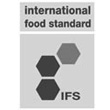Mace
(Myristica fragrans)
Mace – Ingl., Macis, Mascatblume – Ted., Macis, Fleur de muscade – Fr, Juniperus – Sp., Можжеве́льник - Russ.
 Mace is the name of the grid pattern,(reticulum) botanically known as “aril” which covers the shell of nutmeg. When mace is fresh it is fleshy and bright red, when dried it turns orange or amber- yellow. The plant is native to the Band Island, in Indonesia, but is also widespread in tropical or subtropical areas (Java, Sumatra, Sri Lanka, India, Caribbean).
Mace is the name of the grid pattern,(reticulum) botanically known as “aril” which covers the shell of nutmeg. When mace is fresh it is fleshy and bright red, when dried it turns orange or amber- yellow. The plant is native to the Band Island, in Indonesia, but is also widespread in tropical or subtropical areas (Java, Sumatra, Sri Lanka, India, Caribbean).
Mace whole or ground, origin Indonesia (Siauw / Ambon) or Papua.
Food Composition
It contains fats, minerals, pigments, cellulose and nitrogenous substances. Essential oil, sometimes up to 10% and more.
VIDEO: Fresh Mace
Culinary Use
Mace is more delicate than nutmeg; it is often preferred in food industry for preparations of blends for meat and sausages, for sauces and condiments. It can also be used to flavor fish and crustaceans, and in some drinks.
It is one of the ingredients of curry, and of many spice mixtures. It is a basic ingredient of Indian cuisine.
Healing Effect
Preservation
Mace is stored iMace is stored in a dry place, away from light.
VIDEO: Processing Mace
n a dry place, away from light.





